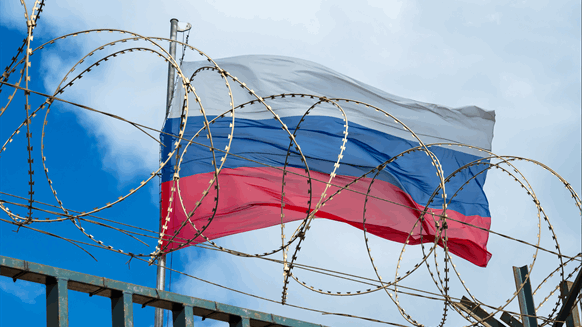Russia plans to cut its oil output by 500,000 barrels a day next month, following the threat of retaliation against Western energy sanctions and pushing up oil prices.
The move threatens to renew turmoil in the oil market, which had so far taken the disruption of Russian supplies in stride. Delegates from other members of the OPEC+ coalition signaled that they would not increase production to fill the gap.
Crude oil prices jumped on the news, with global benchmark Brent trading 2.2% higher at $86.34 a barrel at 12:22 pm in London. Prior to this week, the international benchmark had fallen 9% since mid-January, helping ease inflationary concerns.
Russia’s reduction is equivalent to about 5% of its January output. The Kremlin has repeatedly hinted at such a move since the European Union and the Group of Seven industrialized countries began discussing limiting the price of Russian crude and refined exports amid the war in Ukraine.
“Russia believes that the price cap mechanism for Russian oil and oil products is an intervention in market relations and an extension of the collective West’s destructive energy policies,” Deputy Prime Minister Alexander Novak said on Friday in a statement. Its press service confirmed that crude oil production will be affected by the cuts.
Moscow’s move deepens supply constraints of 2 million barrels per day announced late last year by OPEC+, which Russia leads along with Saudi Arabia. At a committee meeting earlier this month, the group’s ministers saw no need to change its production cap, which runs until the end of 2023.
Since the imposition of the EU import bans and price cap “most observers expected some production loss, and Moscow may be trying to portray a mandatory cut as a voluntary policy option,” said Bob McNally, chairman of Rapidan Energy Group and former White. House officer “I doubt Russia’s OPEC+ partners have been taken by surprise, and I don’t expect the supply cut to change their ‘hang in’ policy stance.”
In the short term, there is no one to fill the supply gap created by the Russian cuts, said Giovanni Staunovo, an analyst at UBS Group AG.
As of now, Russia is able to sell its oil volumes to foreign markets, but does not want to adhere to price restrictions imposed by Western nations, according to Novak. “When we make further decisions, we will act based on how the market situation is developing,” he said.
Market perspectives
Russian cuts are unlikely to affect global oil prices in the long term, according to Viktor Katona, crude oil analyst at Kpler. The cut so far has only been announced for March, and Russia’s output could pick up after that, he said.
Given the country’s ability to export crude amid sanctions, production cuts could lead to a reduction in refineries, while supplies to foreign customers could remain robust, Katona added.
It could also take more than a month for Russia to redistribute crude and product volumes that have been freed up by Europe’s import bans, said Sergey Vakulenko, a veteran Russian oil expert with the Carnegie Endowment for International Peace.
“Then Russia could continue the production cut and the PR campaign that goes with it,” he said.
Fall in income
Russian oil production has been surprisingly resilient amid several waves of energy restrictions imposed by Western nations and their allies.
Since hitting a post-invasion low of 10.05 million barrels per day in April, Russian oil output has rebounded to around 10.9 million by the end of 2022. It remained close to this level in January, despite the European Union’s ban on most of the country’s maritime imports. the country’s crude oil on December 5.
Still, Moscow’s oil revenues have been hit in recent months amid price caps and generally lower global crude prices. The discount at which Urals crude, Russia’s main export grade, has been extended to the international benchmark has also been widened as the country seeks new markets and alternative shipping methods in the face of sanctions.


